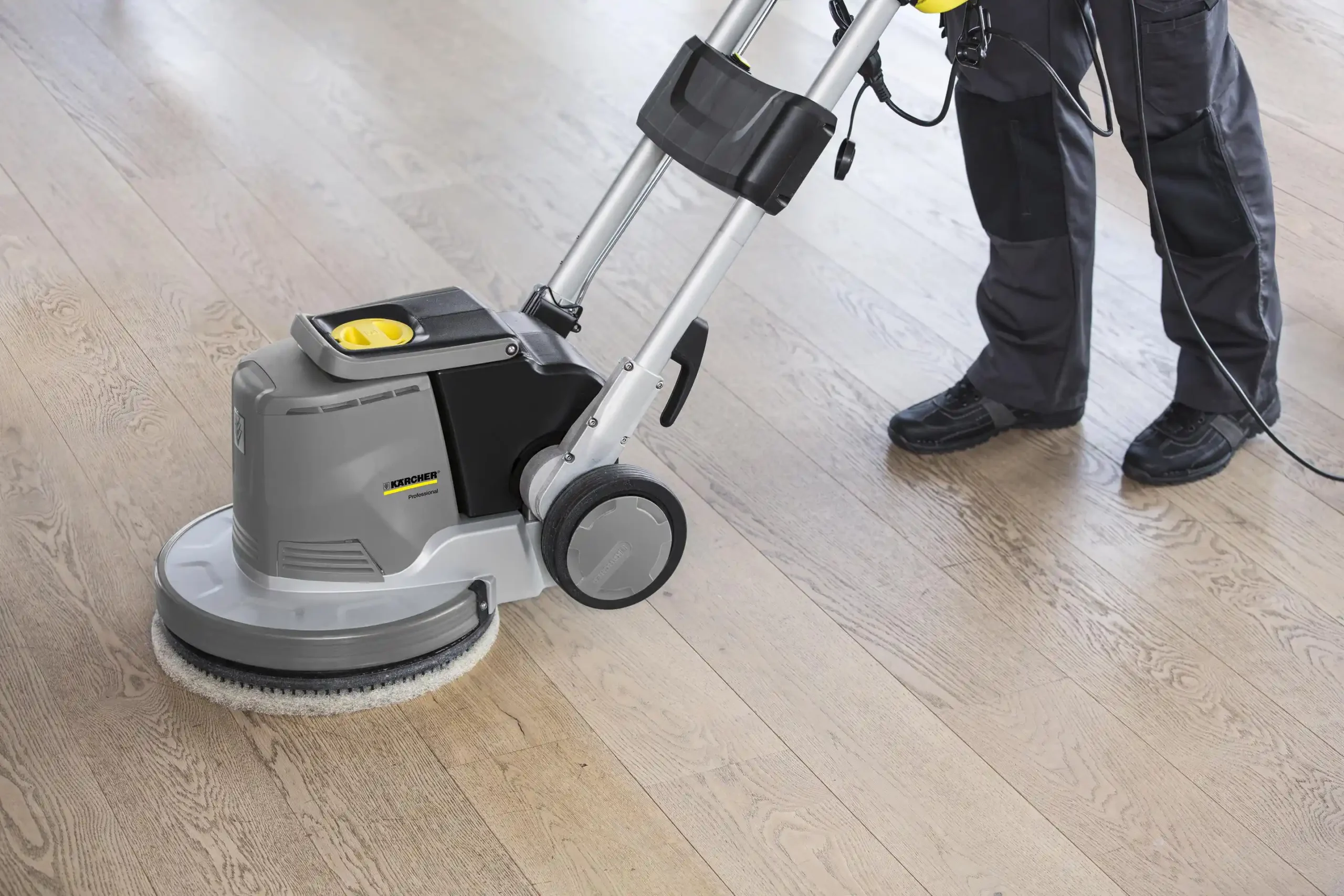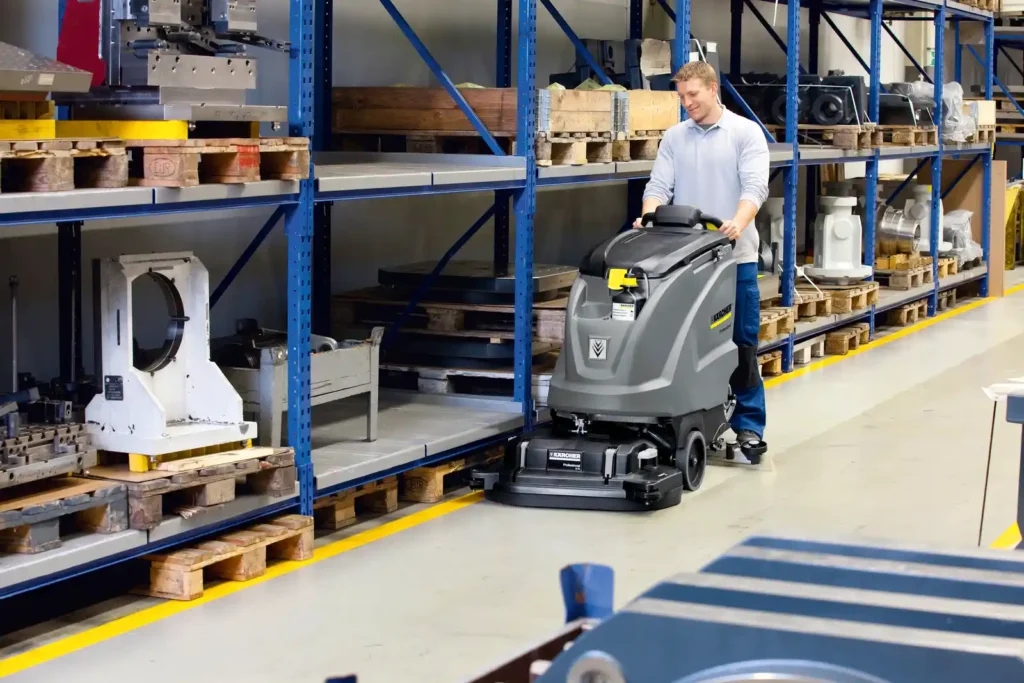Safety Tips for Using Industrial Floor Cleaning Equipment

Michael Adeniran is the CEO of Pressure King Inc. He has been dealing in commercial cleaning equipment for many years. He is one of the leading specialists and experts in commercial cleaning products.

Industrial floor cleaning machines are used to take care of cleanliness in commercial premises, warehouses, and large-scale places. Nevertheless, their strong motors, sharp parts, and heavy-duty design are associated with risks when people do not use them properly. It could be either an auto-scrubber, sweeper, or buffer, but there must be a usage protocol that should be followed to ensure it does not cause accidents, injury, or machine breakage.
In this blog, effective and practical safety measures of floor cleaning machines targeted at the training of the operator and the common hazards and their prevention will also be described. Introducing these good practices guarantees not only a cleaner facility but also a safer facility. Risk reduction and optimal use of equipment life extend to the end of their useful service can be supported by businesses and cleaning staff according to this guide.
In case you have a facility that utilizes commercial scrubbers or are planning on updating your fleet, the following commercial scrubber safety practices are a mandatory part of ensuring both your personnel and investment stay safe.
Why Safety Matters with Industrial Cleaning Machines
The industrial cleaning machines cannot be operated without safety. These machines are power-efficient and fast-riding, but a lack of precaution may cause dangerous accidents in workplaces. Accidents that happen with cleaning equipment end up in injuries, damage to property, and legal or insurance mess.
By following the safety standards of the floor cleaning machines, the risks are minimized, and cleaning activities are still maintained promptly. Sprains, electric shocks, or chemical contact could be avoided by simple knowledge and preparation.
Why safety is critical:
- Protects operators and bystanders from injury
- Prevents downtime caused by accidents or equipment failure
- Ensures regulatory compliance (e.g., OSHA, ANSI)
- Improves productivity through uninterrupted cleaning routines
- Preserves equipment lifespan, reducing replacement and repair costs
Stiff commercial scrubber safety measures are more than just safety to the workers, but also a protective measure to your brand and business progress.

Operator Training: The First Line of Defense
Whatever the level of cleaning equipment, the weakest point is untrained personnel handling it. The most significant aspect of a safety plan associated with any floor cleaning machine consists of structured operator training. Before operating a scrubber or sweeper, all employees should be trained both in the classroom and on the job.
Training should cover:
- Basic machine operation and controls
- Start-up and shut-down procedures
- Emergency features like safety switches and cutoffs
- Battery and fuel handling protocols
- Routine maintenance, such as cleaning tanks and replacing brushes
- Personal protective equipment (PPE) usage
Training documents or certification are highly encouraged. Refresher activities are performed regularly to maintain the level of compliance with the current commercial scrubber safety recommendations and to support new equipment or personnel.
Once training is taken seriously, operators become informed users who can create both safety and efficiency and minimize the chances of making costly mistakes.
Common Hazards and How to Avoid Them
Although it is convenient, industrial cleaning machines pose potential risks that are injurious or damaging to property when not attended to. The initial step towards effective floor cleaning machine safety is being aware of such threats.
Common Hazards:
- Slips and Falls: Wet floors or chemical spills can cause accidents.
Solution: Use wet floor signs and allow time for drying. - Electrical Shock: Damaged cords or exposed wiring.
Solution: Inspect electrical components before use; never use near water. - Mechanical Injuries: Contact with moving parts during operation or maintenance.
Solution: Turn off and unplug before performing any cleaning or repairs. - Poor Visibility and Obstacles: Restricted line of sight or crowded areas.
Solution: Clean during low-traffic hours; pre-clear the path.
Enforcing commercial scrubber safety guidelines requires awareness, enforcement, and a culture of accountability. By proactively identifying and addressing hazards, facilities can dramatically reduce incident rates.

Pre-Operation Safety Checklist
A pre-operation checklist is a vital part of floor cleaning machine safety and should be completed before every use. This simple habit can prevent accidents, minimize downtime, and alert operators to issues before they escalate.
What to Check:
- Inspect machine parts for wear and damage (wheels, brushes, hoses)
- Check fluid levels (detergents, water, fuel/battery charge)
- Verify cord integrity (no fraying or exposed wires)
- Test safety features (emergency shutoff, brakes, lights)
- Ensure PPE (non-slip footwear, gloves, safety glasses) is worn
- Clear the surrounding area for safe machine movement
Operators should document each inspection and report any concerns immediately. This level of diligence supports both commercial scrubber safety guidelines and overall machine performance.
By making this checklist part of the standard routine, businesses improve safety while extending the operational lifespan of their equipment.
Equipment-Specific Tips
Industrial floor cleaning machines come in a variety of types—each with its own operational characteristics, hazards, and safety requirements. Tailoring your safety practices to the specific machine being used is essential for maximizing productivity while minimizing risk. Understanding equipment-specific behavior is a critical aspect of effective floor cleaning machine safety.
Ride-On Scrubbers
Ride-on models offer high productivity but can be hazardous without proper care. These machines are larger, heavier, and often used in spacious areas such as warehouses or airports.
- Always inspect blind spots before moving. Use mirrors or cameras if available.
- Wear a seatbelt if the machine is equipped with one.
- Operate at low speeds, especially around corners or loading docks.
- Ensure adequate clearance in doorways and aisles to prevent collision.
Walk-Behind Scrubbers
Walk-behind units are more compact and suited for maneuvering in tight areas like schools or retail stores, but they still pose risks when misused.
- Use both hands on the handle and maintain good posture to prevent strain.
- Avoid jerky movements and let the machine guide itself smoothly.
- Pay attention to floor conditions to prevent slipping, especially near spills.

Buffers and Burnishers
These high-speed machines can deliver exceptional shine but are known for their torque and power.
- Start at the lowest speed setting until control is established.
- Keep the machine balanced and avoid buffing over wet or uneven surfaces.
- Always keep hands and feet away from the rotating pad.
Adhering to commercial scrubber safety guidelines for each type of equipment reduces wear and tear, prevents injuries, and ensures optimal performance. Training your team on machine-specific safety is just as important as general protocols. When operators respect the nuances of their equipment, your facility benefits from both safer operations and cleaner results.
Conclusion
Industrial floor cleaning equipment delivers incredible productivity—but only when used safely. Through proper operator training, hazard awareness, and consistent procedures, businesses can protect both workers and machines. The combination of a thorough floor cleaning machine safety strategy and adherence to commercial scrubber safety guidelines ensures you get the best results without risking downtime, injuries, or expensive repairs.





